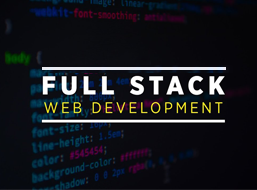Table of contents:
|
1. AWS CloudFormation |
|
2. Azure Automation |
|
3. Google Cloud Deployment Manager |
|
4. Terraform |
|
5. Ansible |
|
6. Puppet |
|
7. Kubernetes |
|
8. Wrapping Up |
|
9. Frequently Asked Questions 9FAQs) |
In today’s fast-moving IT landscape, cloud automation tools aren’t optional; they’re essential. As a trainer at Apponix, I see firsthand how professionals equipped with the right skills gain an edge.
Whether you're looking to streamline resources, enforce consistency, or support multi-cloud deployments, mastering these tools positions you for success.
Let’s explore seven standout tools that can transform your cloud automation and orchestration game.
AWS CloudFormation
One of the pillars of cloud automation and orchestration tools is AWS CloudFormation. With CloudFormation, you define your AWS infrastructure as code—templates describe stacks, and AWS builds those resources automatically. This removes manual provisioning, reduces errors, and enforces consistency across environments. Because replication and version control become manageable, your deployments gain reliability.
For anyone preparing for a cloud computing course in Bangalore or elsewhere, understanding CloudFormation opens doors in AWS-centric firms and multi-cloud shops alike.
Azure Automation
Next up is Azure Automation, Microsoft’s offering that supports runbooks, configuration management, patching, and task automation across Azure resources. When I train learners at Apponix, I emphasise how Azure Automation enables orchestration of tasks across on-premises and cloud environments. For organisations building hybrid infrastructure, this tool bridges legacy and modern systems.
Google Cloud Deployment Manager
For Google Cloud Platform (GCP) environments, the tool of choice is Google Cloud Deployment Manager. It allows you to generate, manage, and automate the deployment of resources via declarative templates. As a cloud automation and orchestration tool, it supports repeatable infrastructure builds, making it a vital skill for roles in firms using GCP.
When someone mentions “cloud automation tools”, I always remind them: pick the hyperscaler you’re targeting, and add Deployment Manager (if it’s GCP) to your toolkit.
Terraform
As an instructor, I frequently highlight Terraform from HashiCorp because it spans multiple clouds—AWS, Azure, GCP, and more. Terraform enables Infrastructure as Code (IaC) in a cloud-agnostic manner: you write a blueprint, execute it, and let Terraform manage resource lifecycle, dependencies, drift detection, and state. Because of this versatility, it’s highly desired by employers.
When you enroll in a training institute in Bangalore offering a cloud computing training course, make sure Terraform is part of the curriculum—many job listings explicitly reference it.
Ansible
For configuration management and orchestration of applications and services, Ansible is a strong candidate. Using simple YAML playbooks, you automate provisioning, deployment, and configuration across servers and containers. As the cloud grows more containerised and hybrid, Ansible becomes critical because of its simplicity and flexibility.
In our Apponix sessions, I guide learners through real-world scenarios: deploying an application to AWS, orchestrating container updates with Ansible, and integrating into CI/CD pipelines. This practical angle makes Ansible very “job-ready”.
Puppet
If you’re working at scale, especially managing large server fleets, I recommend learning Puppet. Puppet uses a declarative model to enforce the desired state across your infrastructure, ensuring consistency and compliance. As one of the earlier configuration-management tools, it still has wide enterprise adoption.
As a trainer, I emphasise: mastering Puppet shows you’re comfortable managing complex environments—not just spinning up resources but maintaining them reliably.
Kubernetes
While technically more container-orchestration than classic IaC, Kubernetes is indispensable in the cloud automation toolkit. It automates deployment, scaling, networking, and management of containerised applications. In environments where microservices, multi-cloud, and hybrid-cloud are the norm, knowing Kubernetes is non-negotiable.
In the Apponix classroom, I make sure learners understand how Kubernetes integrates with Terraform, Ansible, and other tools—so you manage infrastructure and applications with automated workflows.
Wrapping Up
From my vantage point at Apponix, a training institute in Bangalore, I’ve seen countless professionals make the leap from feeling overwhelmed by manual cloud deployments to confidently designing automated workflows and infrastructure. These cloud automation tools form the backbone of modern cloud operations—and learning them unlocks roles that actively shape business agility and innovation.
When we talk about a cloud computing training course in Bangalore, it’s not just about ticking boxes. It’s about equipping yourself for roles where you contribute, lead, and transform. At Apponix, we structure our programs so you not only learn tools like AWS CloudFormation, Azure Automation, Google Cloud Deployment Manager, Terraform, Ansible, Puppet, and Kubernetes—but also apply them in real-world projects, build portfolios, and network with industry-ready skills.
My advice: pick one tool, build expertise, then stack one more. Practice end-to-end automation—from infrastructure provisioning with Terraform, configuration with Ansible, to container orchestration with Kubernetes. When you can articulate how each tool contributes to deployment, scaling, compliance, and drift management, you’ll stand out.
If you’re ready to elevate your cloud automation journey and master these tools with guidance, hands-on labs, and mentorship, I’d be thrilled to see you in our next batch at Apponix. Let’s build automation excellence together.
Frequently Asked Questions (FAQs)
Q1: Why should I invest time in cloud automation tools?
Because manual processes increase risk, errors, cost, and slow down time-to-value. Automation ensures consistency, repeatability, and scalability—and employers recognise that.
Q2: Which tool should I learn first?
Start with a foundational one like Terraform or AWS CloudFormation (depending on your cloud focus). Then add configuration management (Ansible or Puppet) and container orchestration (Kubernetes).
Q3: Do I need to learn all clouds (AWS, Azure, GCP)?
Not necessarily all. Choose the platform most relevant to your target employer or local market (in Bangalore, many firms hire AWS/Azure). But familiarity with multi-cloud tools like Terraform gives you flexibility.
Q4: Can I get a job after completing a cloud computing training course in Bangalore?
Yes, but ensure the course is hands-on, covers the tools we’ve discussed, and includes projects, labs, and portfolio work. At Apponix, we focus on that exact structure.
Q5: Is Kubernetes really a cloud automation tool?
Yes, while it’s container orchestration, it automates deployment, scaling, networking, and management of containerised workloads in cloud environments. It works alongside other automation tools, forming a full cloud automation stack.




